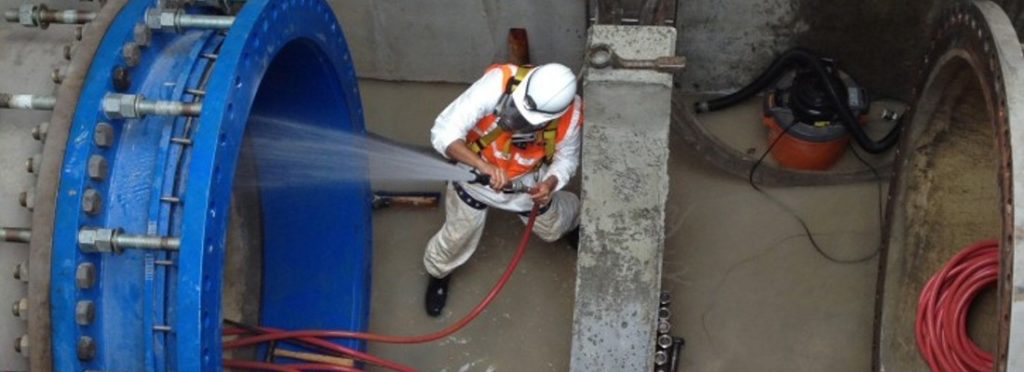As a business owner, it is imperative to keep your water supply in tip-top condition. This includes not only the water itself, but also pipes, containers, backflow, and even the personnel who manage and facilitate the supply and equipment. And when winter arrives, your business faces an additional set of challenges as freezing temperatures set in. So, how do you and your facility prepare and properly maintain your water supply during the coldest time of the year? Read on to learn about water sanitation and preparing for freezing temperatures.
Know The Risks
First things first, it’s important to understand what’s at stake by not preparing your business’s water supply and infrastructure. Frozen and clogged pipes aren’t the only consequence. As water freezes, it expands, which can lead to pipes leaking and/or bursting. This can result in thousands of dollars in damages. Additionally, frozen or damaged piping can compromise the quality and sanitation of your water supply. And you may even be forced to shut off supplies or halt your day-to-day operations. These types of scenarios can escalate quickly and it’s best to nip the problem in the bud before any damages occur.
Assess Your Resources and Equipment
Next, ensure you know where/how water flows into your building and the condition of the tanks that contain your supply, if applicable. Assessing your water supply and related equipment will help to guide you to your building’s needs in terms of winter preparation. Take a look at points of entry for water flow, the quality of your pipes, as well as the condition of any tanks or containers. Additionally, take a look at gauges, thermometers, and any other devices used to measure the quality and amount of your water. Ensure everything is operating properly and if it isn’t, make appropriate repairs before it gets too cold. Creating a winter checklist can be a great way to guarantee all aspects of winter preparation are covered.
Implement Repairs Or Upgrades
Once you have taken inventory of your water supply, equipment, and infrastructure you may see that certain areas will benefit from repairs. Or perhaps some places need to be re-sealed in order to eliminate leaks or cold drafts. Heat tape is an excellent thing to keep on hand. Back-up generators are also highly recommended in case of power loss.
For piping and/or tanks located outdoors, you may have to install additional covering and insulation. And keep the necessary winter tools on hand in case you may need to conduct any basic repairs or disconnect hoses/pipes.
Prevent overflow and draining issues by having your tanks and storage containers inspected before freezing temperatures set in. Overflow can cause excess ice, which, in turn, can cause a tank to collapse from the additional weight.
Besides basic inspections and repairs, you may find that what your business’s water infrastructure needs is an upgrade. This may include additional pump cycles to ensure your water circulates more efficiently or heating systems to maintain proper temperatures. You may also consider temperature alarms or even a recirculation system.
Know What To Do In Case of An Emergency
Like residential homes, it behooves your facility for you and your staff to know what to do when freezing temperatures are at their worst. Know exactly where to find you’re shut-off valve and how to disconnect any backflow assembly. Cover any holes or gaps with the appropriate insulation and heat tape.
For your employees, have an emergency management plan in place, and be sure to review it with your entire staff. Place your emergency plan and contact phone numbers in public areas around your workplace. Ensure checklists of what to do and how to do it are also affixed in prominent places near the relevant equipment. Assign one or two members to manage this program and provide them with the proper training to ensure they can help to facilitate appropriate actions to prepare for winter and also during an emergency.
Keep A Good Stock On Hand
Some basic supplies to have available include heat tape, pipe thawing equipment, and repair clamps. Also keep a list of frequent chemicals you use and their supplier’s info on hand, as well as emergency contact numbers for local utilities. If you haven’t taken the steps to get your facility’s equipment and water supply inspected and prepped for freezing temperatures, we strongly encourage you to do so. Need an expert to come to assess your piping and tanks? Let us help! Our company offers the best in both quality water treatment products and services at competitive prices. Visit our site today!



